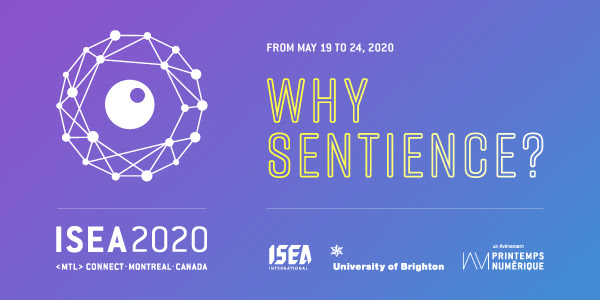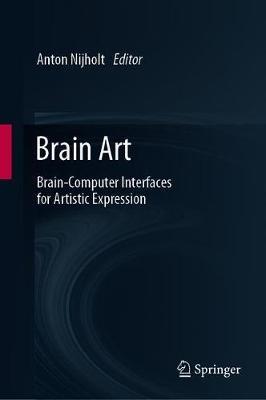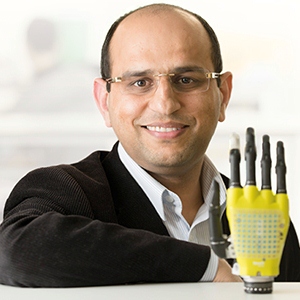Both of these bits have a music focus but they represent two entirely different science-based approaches to that form of art and one is solely about the music and the other is included as one of the art-making processes being investigated..
Large Interactive Virtual Environment Laboratory (LIVELab) at McMaster University
Laurel Trainor and Dan J. Bosnyak both of McMaster University (Ontario, Canada) have written an October 27, 2019 essay about the LiveLab and their work for The Conversation website (Note: Links have been removed),
The Large Interactive Virtual Environment Laboratory (LIVELab) at McMaster University is a research concert hall. It functions as both a high-tech laboratory and theatre, opening up tremendous opportunities for research and investigation.
As the only facility of its kind in the world, the LIVELab is a 106-seat concert hall equipped with dozens of microphones, speakers and sensors to measure brain responses, physiological responses such as heart rate, breathing rates, perspiration and movements in multiple musicians and audience members at the same time.
Engineers, psychologists and clinician-researchers from many disciplines work alongside musicians, media artists and industry to study performance, perception, neural processing and human interaction.
In the LIVELab, acoustics are digitally controlled so the experience can change instantly from extremely silent with almost no reverberation to a noisy restaurant to a subway platform or to the acoustics of Carnegie Hall.
…
Real-time physiological data such as heart rate can be synchronized with data from other systems such as motion capture, and monitored and recorded from both performers and audience members. The result is that the reams of data that can now be collected in a few hours in the LIVELab used to take weeks or months to collect in a traditional lab. And having measurements of multiple people simultaneously is pushing forward our understanding of real-time human interactions.
Consider the implications of how music might help people with Parkinson’s disease to walk more smoothly or children with dyslexia to read better.
…
[…] area of ongoing research is the effectiveness of hearing aids. By the age of 60, nearly 49 per cent of people will suffer from some hearing loss. People who wear hearing aids are often frustrated when listening to music because the hearing aids distort the sound and cannot deal with the dynamic range of the music.
The LIVELab is working with the Hamilton Philharmonic Orchestra to solve this problem. During a recent concert, researchers evaluated new ways of delivering sound directly to participants’ hearing aids to enhance sounds.
Researchers hope new technologies can not only increase live musical enjoyment but alleviate the social isolation caused by hearing loss.
Imagine the possibilities for understanding music and sound: How it might help to improve cognitive decline, manage social performance anxiety, help children with developmental disorders, aid in treatment of depression or keep the mind focused. Every time we conceive and design a study, we think of new possibilities.
The essay also includes an embedded 12 min. video about LIVELab and details about studies conducted on musicians and live audiences. Apparently, audiences experience live performance differently than recorded performances and musicians use body sway to create cohesive performances. You can find the McMaster Institute for Music & the Mind here and McMaster’s LIVELab here.

Metacreation Lab at Simon Fraser University (SFU)
I just recently discovered that there’s a Metacreation Lab at Simon Fraser University (Vancouver, Canada), which on its homepage has this ” Metacreation is the idea of endowing machines with creative behavior.” Here’s more from the homepage,
As the contemporary approach to generative art, Metacreation involves using tools and techniques from artificial intelligence, artificial life, and machine learning to develop software that partially or completely automates creative tasks. Through the collaboration between scientists, experts in artificial intelligence, cognitive sciences, designers and artists, the Metacreation Lab for Creative AI is at the forefront of the development of generative systems, be they embedded in interactive experiences or integrated into current creative software. Scientific research in the Metacreation Lab explores how various creative tasks can be automated and enriched. These tasks include music composition [emphasis mine], sound design, video editing, audio/visual effect generation, 3D animation, choreography, and video game design.
Besides scientific research, the team designs interactive and generative artworks that build upon the algorithms and research developed in the Lab. This work often challenges the social and cultural discourse on AI.
Much to my surprise I received the Metacreation Lab’s inaugural email newsletter (received via email on Friday, November 15, 2019),
Greetings,
We decided to start a mailing list for disseminating news, updates, and announcements regarding generative art, creative AI and New Media. In this newsletter:
- ISEA 2020: The International Symposium on Electronic Art. ISEA return to Montreal, check the CFP bellow and contribute!
- ISEA 2015: A transcription of Sara Diamond’s keynote address “Action Agenda: Vancouver’s Prescient Media Arts” is now available for download.
- Brain Art, the book: we are happy to announce the release of the first comprehensive volume on Brain Art. Edited by Anton Nijholt, and published by Springer.
Here are more details from the newsletter,
ISEA2020 – 26th International Symposium on Electronic Arts

| Montreal, September 24, 2019 Montreal Digital Spring (Printemps numérique) is launching a call for participation as part of ISEA2020 / MTL connect to be held from May 19 to 24, 2020 in Montreal, Canada. Founded in 1990, ISEA is one of the world’s most prominent international arts and technology events, bringing together scholarly, artistic, and scientific domains in an interdisciplinary discussion and showcase of creative productions applying new technologies in art, interactivity, and electronic and digital media. For 2020, ISEA Montreal turns towards the theme of sentience. ISEA2020 will be fully dedicated to examining the resurgence of sentience—feeling-sensing-making sense—in recent art and design, media studies, science and technology studies, philosophy, anthropology, history of science and the natural scientific realm—notably biology, neuroscience and computing. We ask: why sentience? Why and how does sentience matter? Why have artists and scholars become interested in sensing and feeling beyond, with and around our strictly human bodies and selves? Why has this notion been brought to the fore in an array of disciplines in the 21st century? |
| CALL FOR PARTICIPATION: WHY SENTIENCE? ISEA2020 invites artists, designers, scholars, researchers, innovators and creators to participate in the various activities deployed from May 19 to 24, 2020. To complete an application, please fill in the forms and follow the instructions. The final submissions deadline is NOVEMBER 25, 2019. Submit your application for WORKSHOP and TUTORIAL Submit your application for ARTISTIC WORK Submit your application for FULL / SHORT PAPER Submit your application for PANEL Submit your application for POSTER Submit your application for ARTIST TALK Submit your application for INSTITUTIONAL PRESENTATION |
| You can apply for several categories. All profiles are welcome. Notifications of acceptance will be sent around January 13, 2020. Important: please note that the Call for participation for MTL connect is not yet launched, but you can also apply to participate in the programming of the other Pavilions (4 other themes) when registrations are open (coming soon): mtlconnecte.ca/en TICKETS Registration is now available to assist to ISEA2020 / MTL connect, from May 19 to 24, 2020. Book today your Full Pass and get the early-bird rate! |
More from the newsletter,
ISEA 2015 was in Vancouver, Canada, and the proceedings and art catalog are still online. The news is that Sara Diamond released her 2015 keynote address as a paper: Action Agenda: Vancouver’s Prescient Media Arts. It is never too late so we thought we would let you know about this great read. See The 2015 Proceedings Here
The last item from the inaugural newsletter,

The first book that surveys how brain activity can be monitored and manipulated for artistic purposes, with contributions by interactive media artists, brain-computer interface researchers, and neuroscientists. View the Book Here
As per the Leonardo review from Cristina Albu:
“Another seminal contribution of the volume is the presentation of multiple taxonomies of “brain art,” which can help art critics develop better criteria for assessing this genre. Mirjana Prpa and Philippe Pasquier’s meticulous classification shows how diverse such works have become as artists consider a whole range of variables of neurofeedback.” Read the Review
For anyone not familiar with the ‘Leonardo’ cited in the above, it’s Leonardo; the International Society for the Arts, Sciences and Technology.
Should this kind of information excite and motivate you do start metacreating, you can get in touch with the lab,
Our mailing address is:
Metacreation Lab for Creative AI
School of Interactive Arts & Technology
Simon Fraser University
250-13450 102 Ave.
Surrey, BC V3T 0A3
Web: http://metacreation.net/
Email: metacreation_admin (at) sfu (dot) ca
